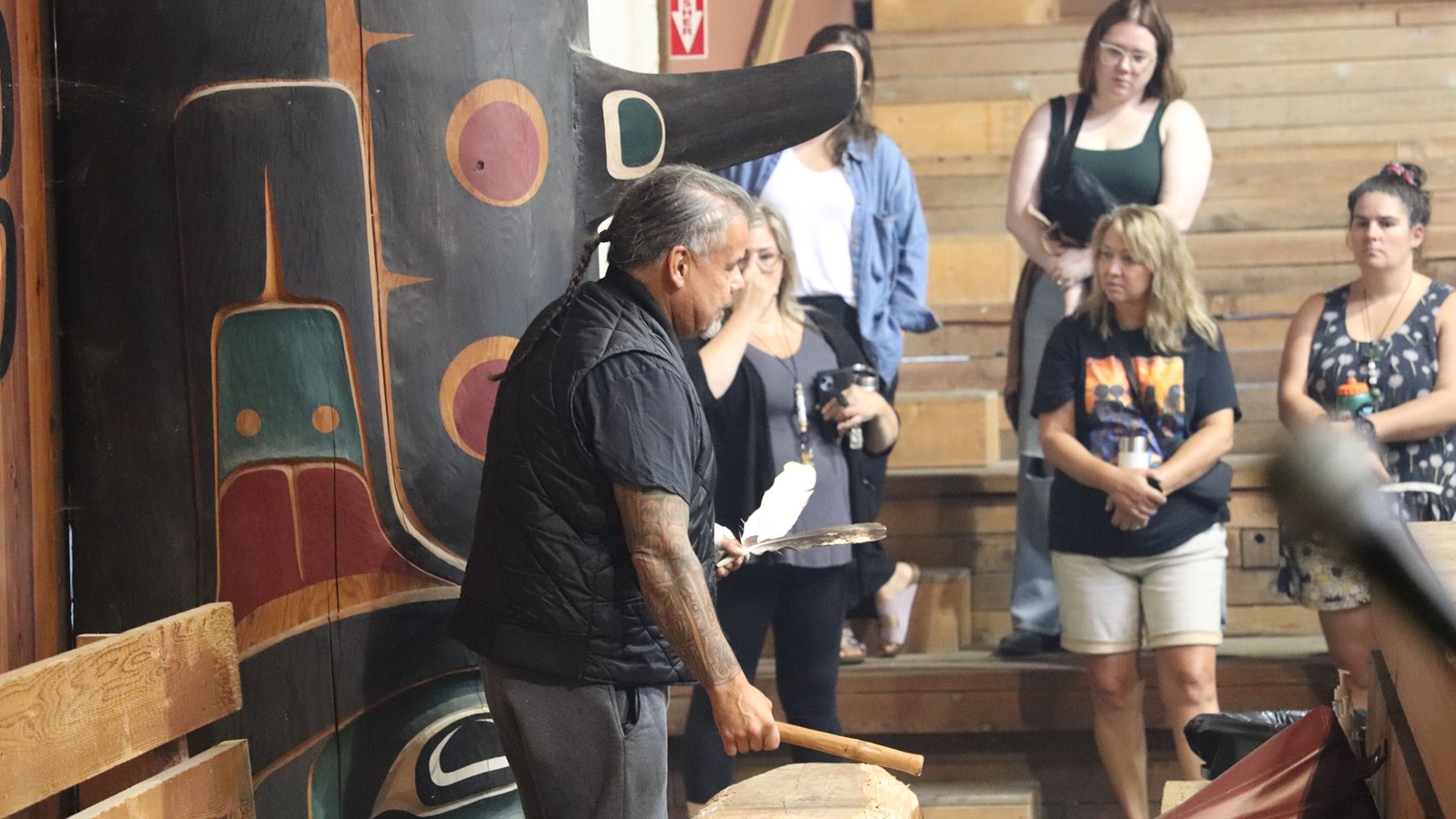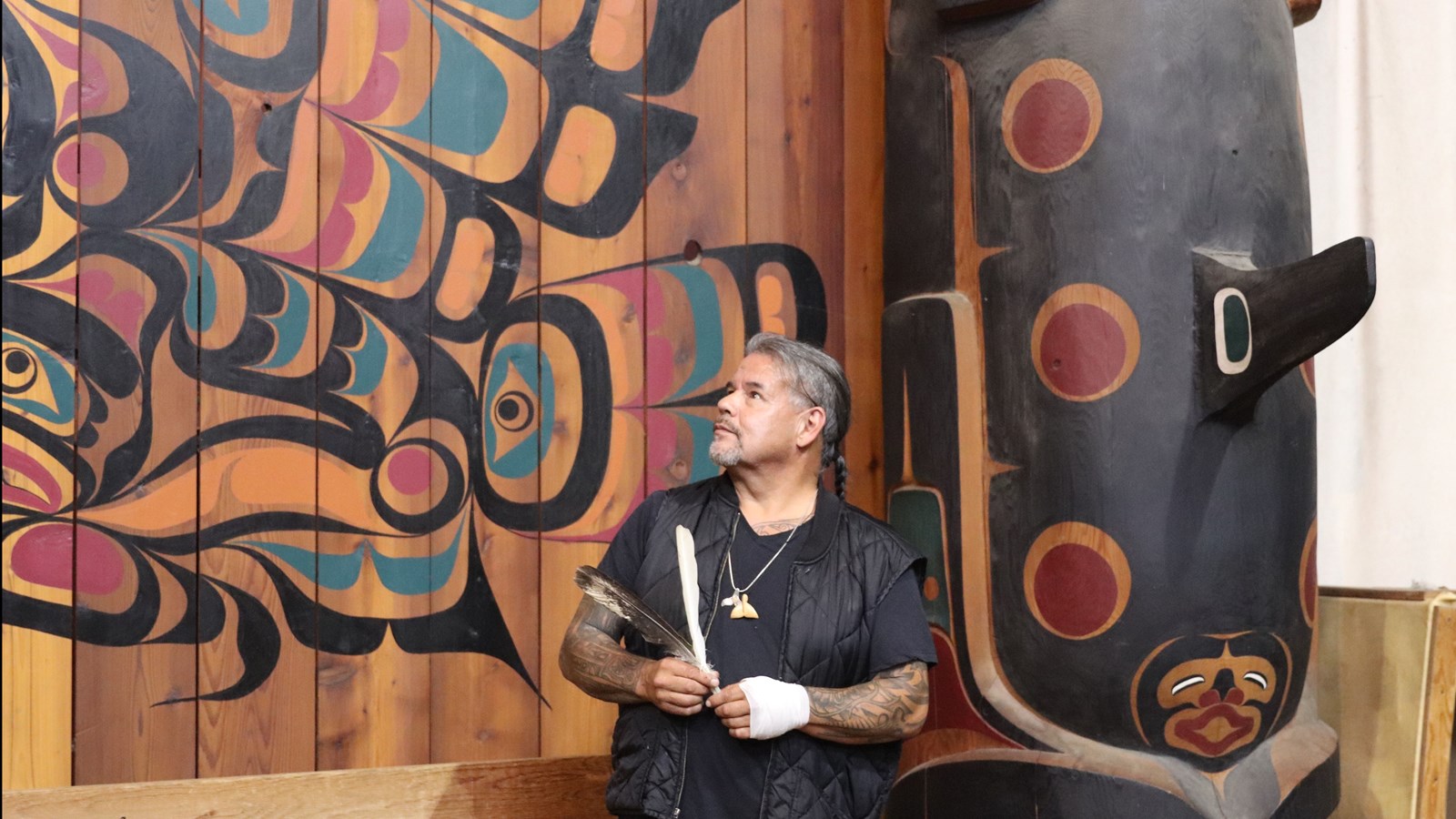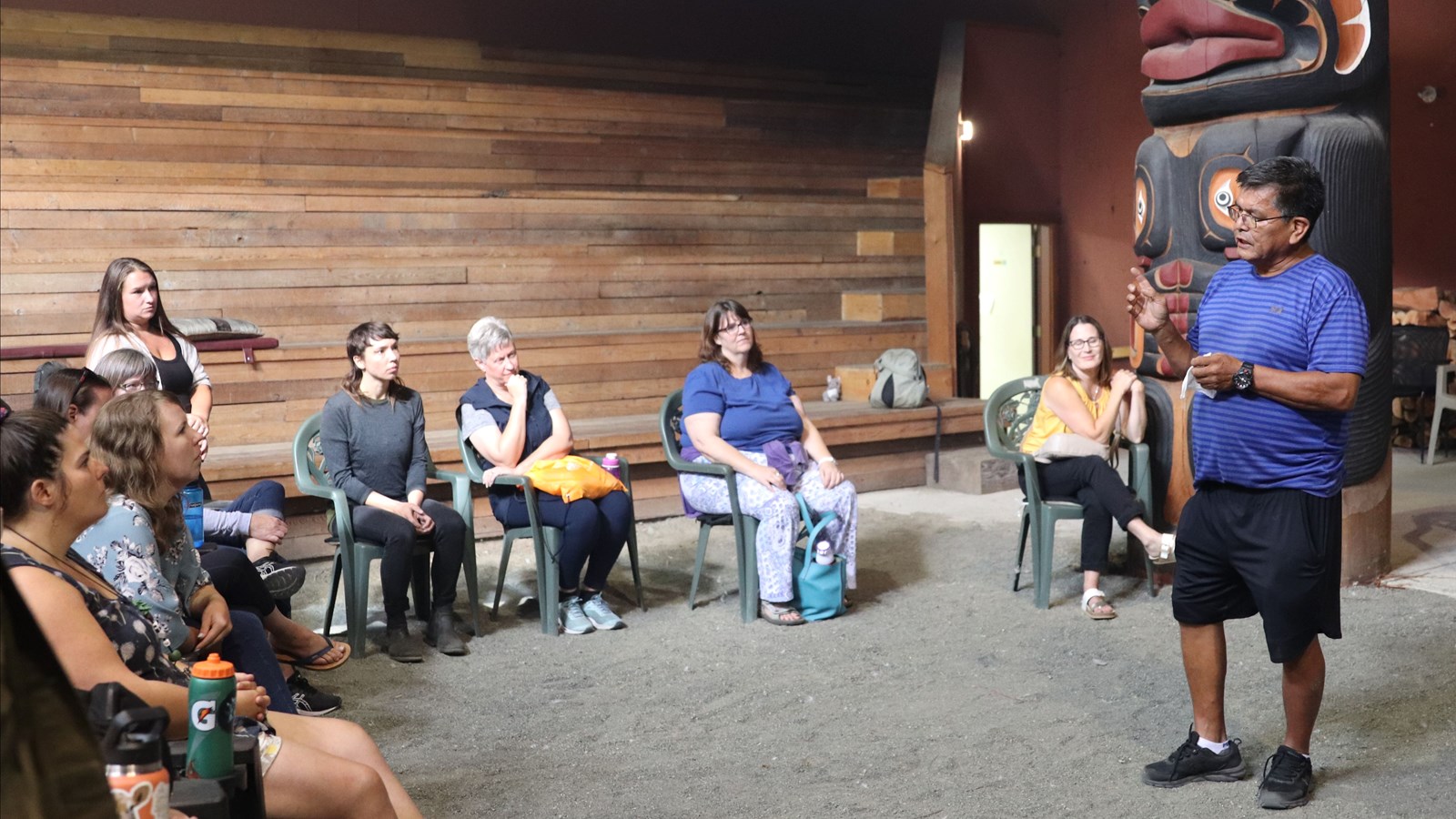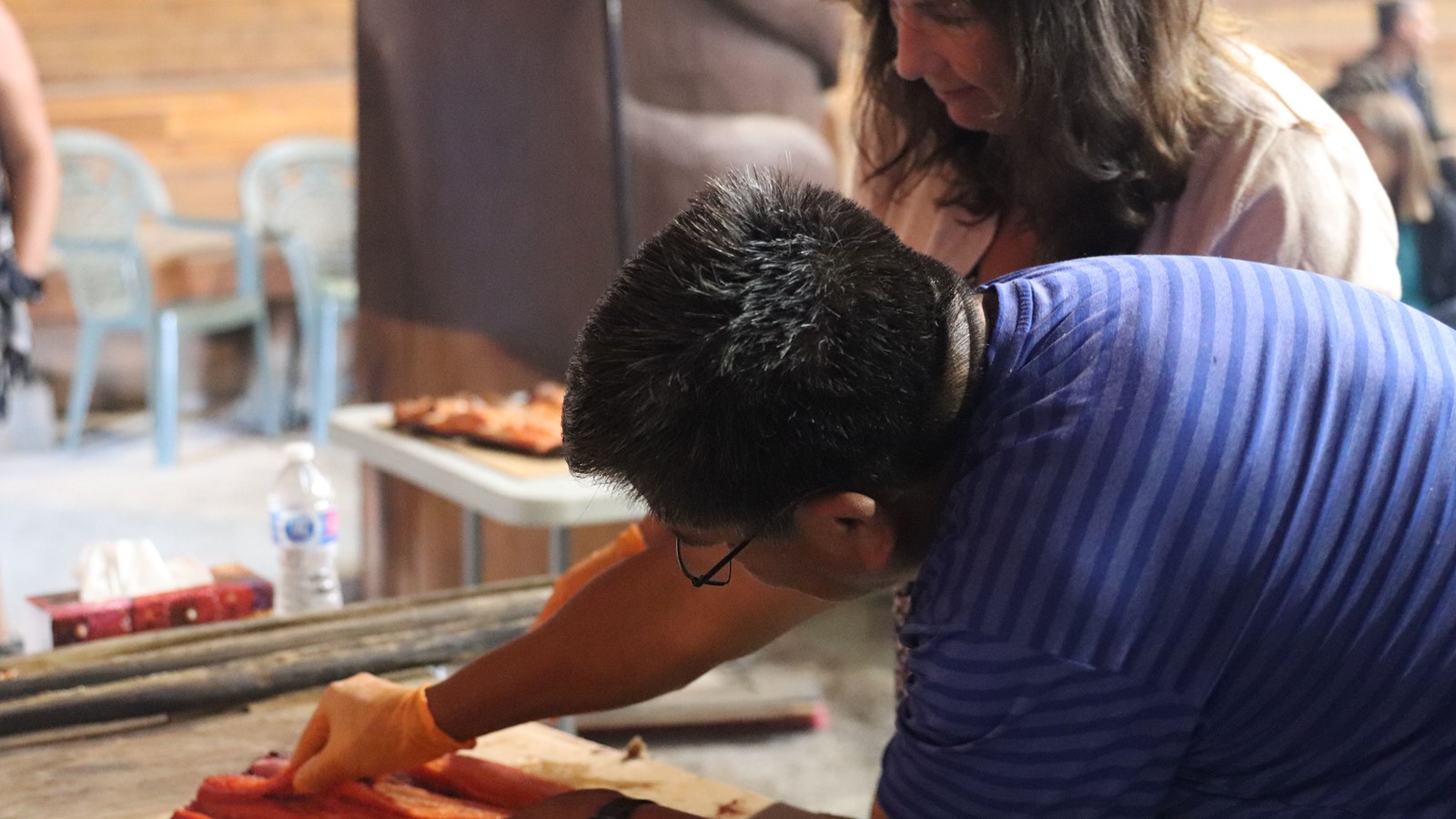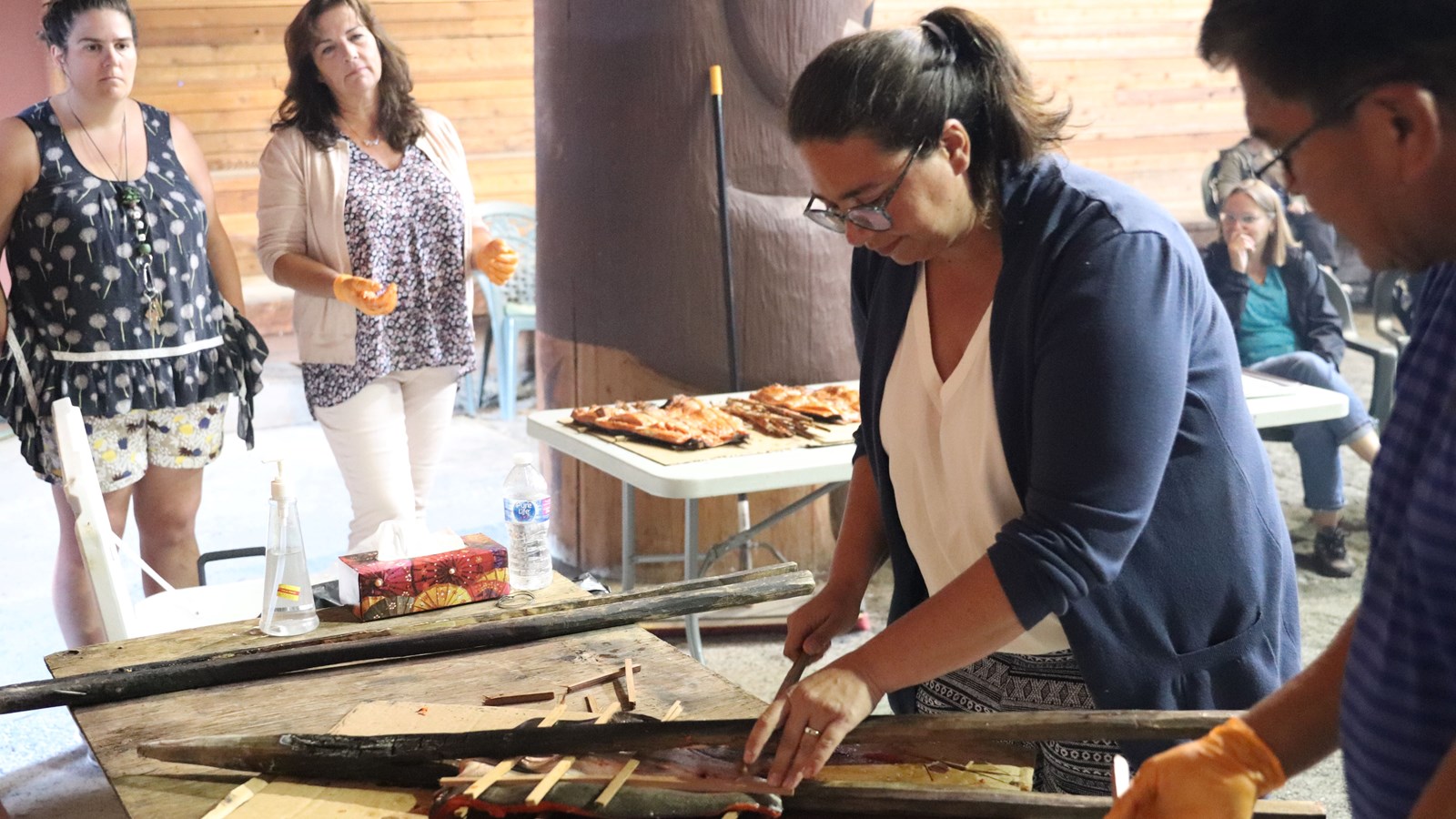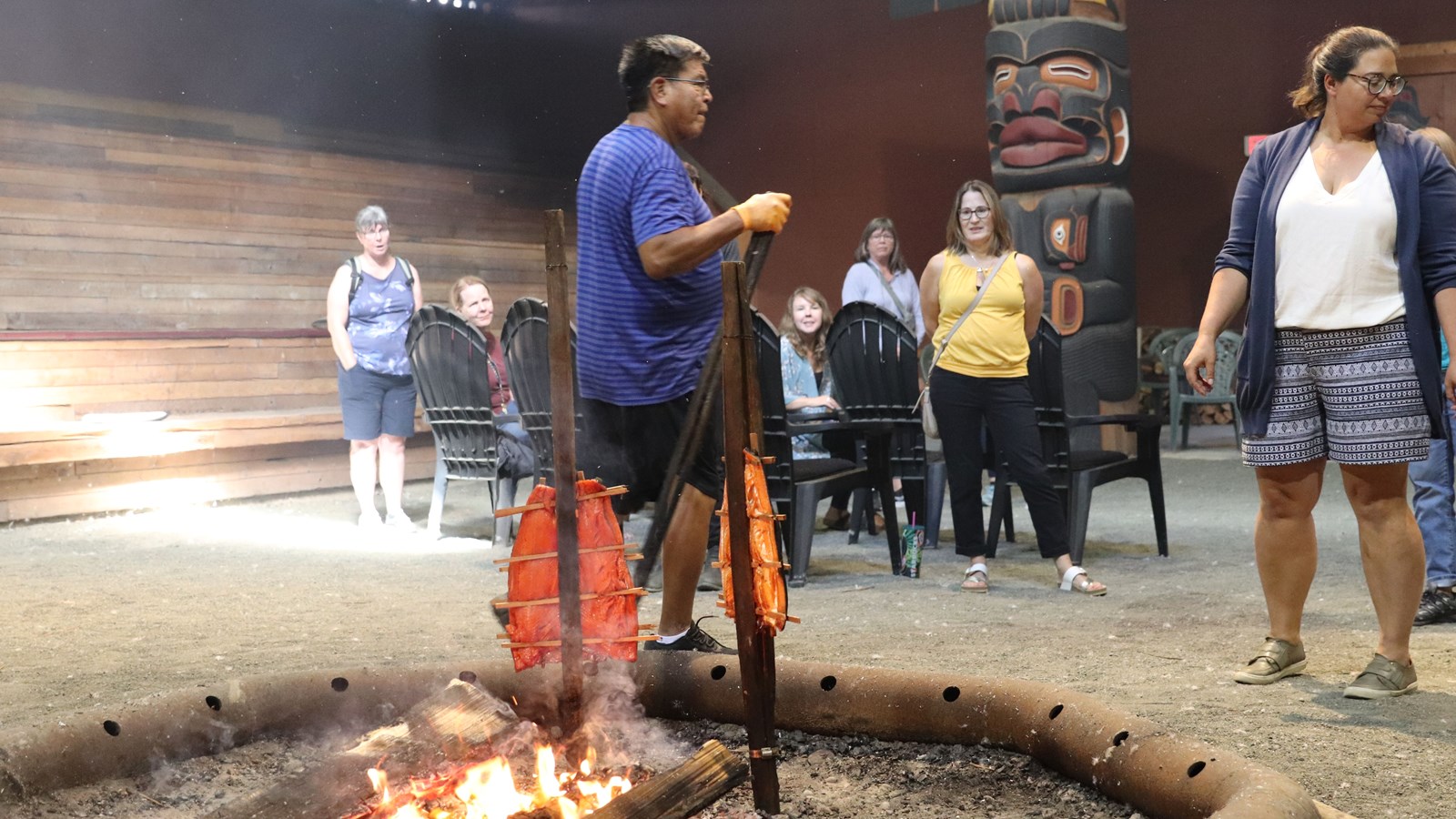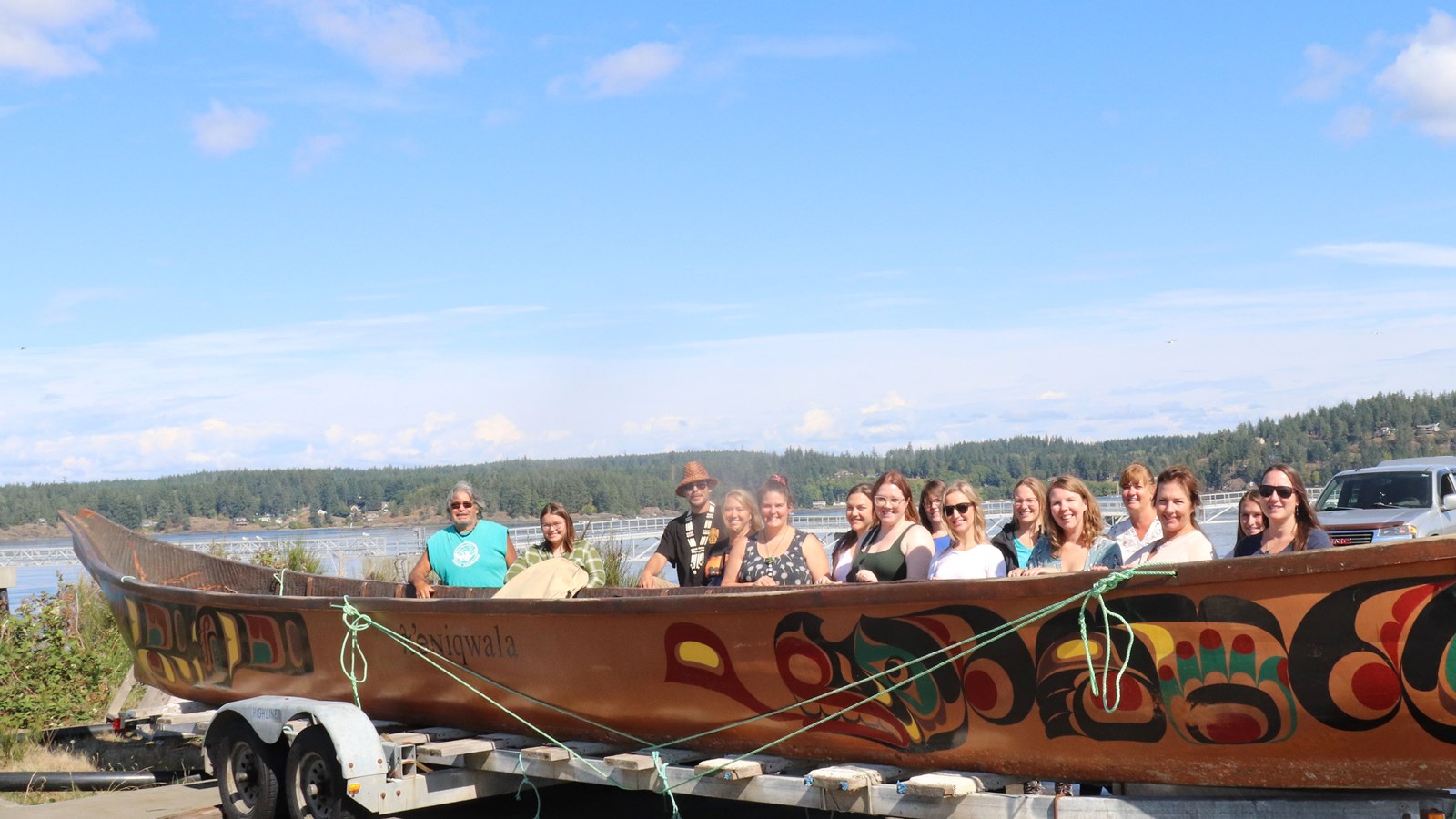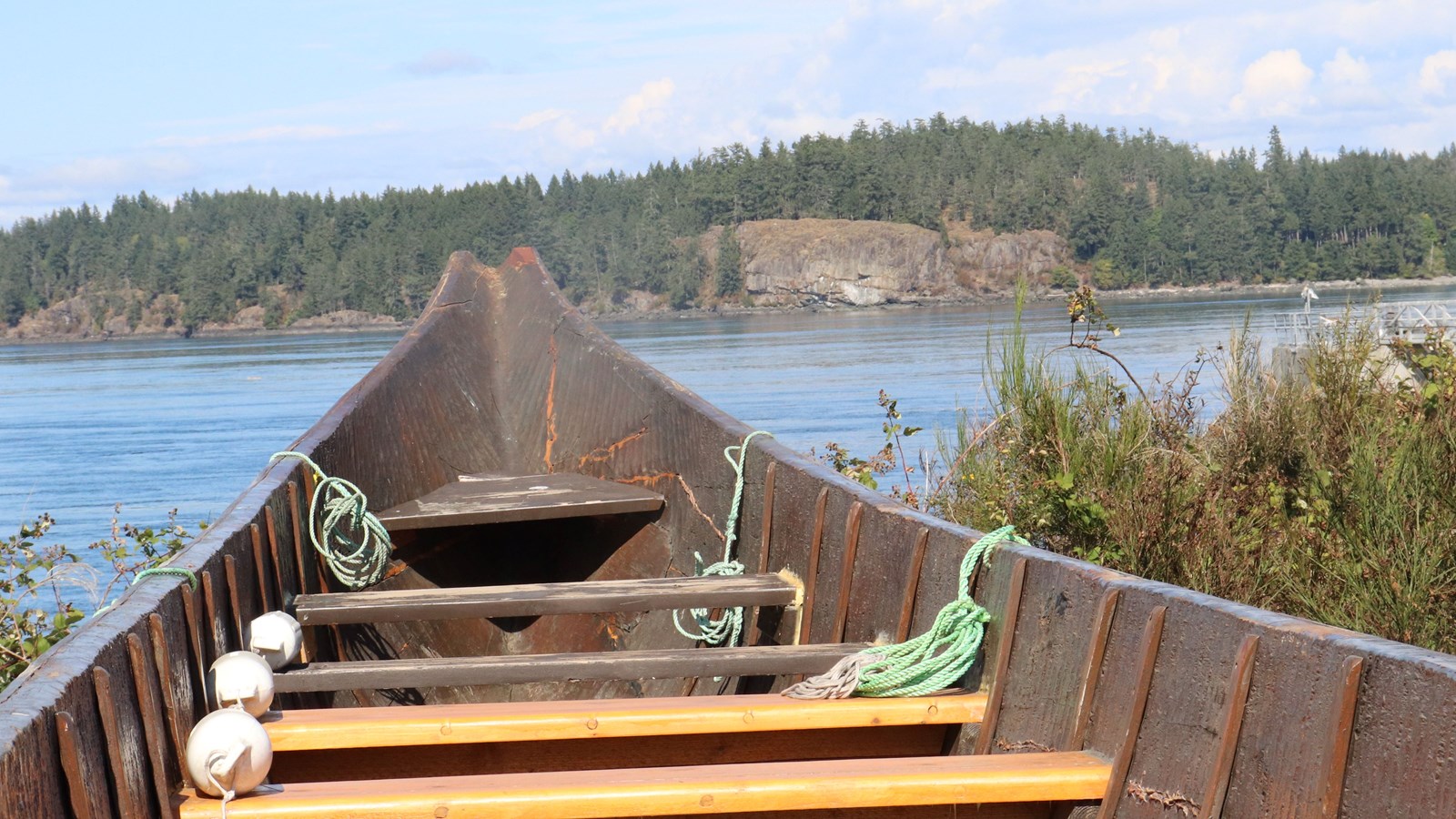Building Cultural Understanding and Belonging through Pro-D
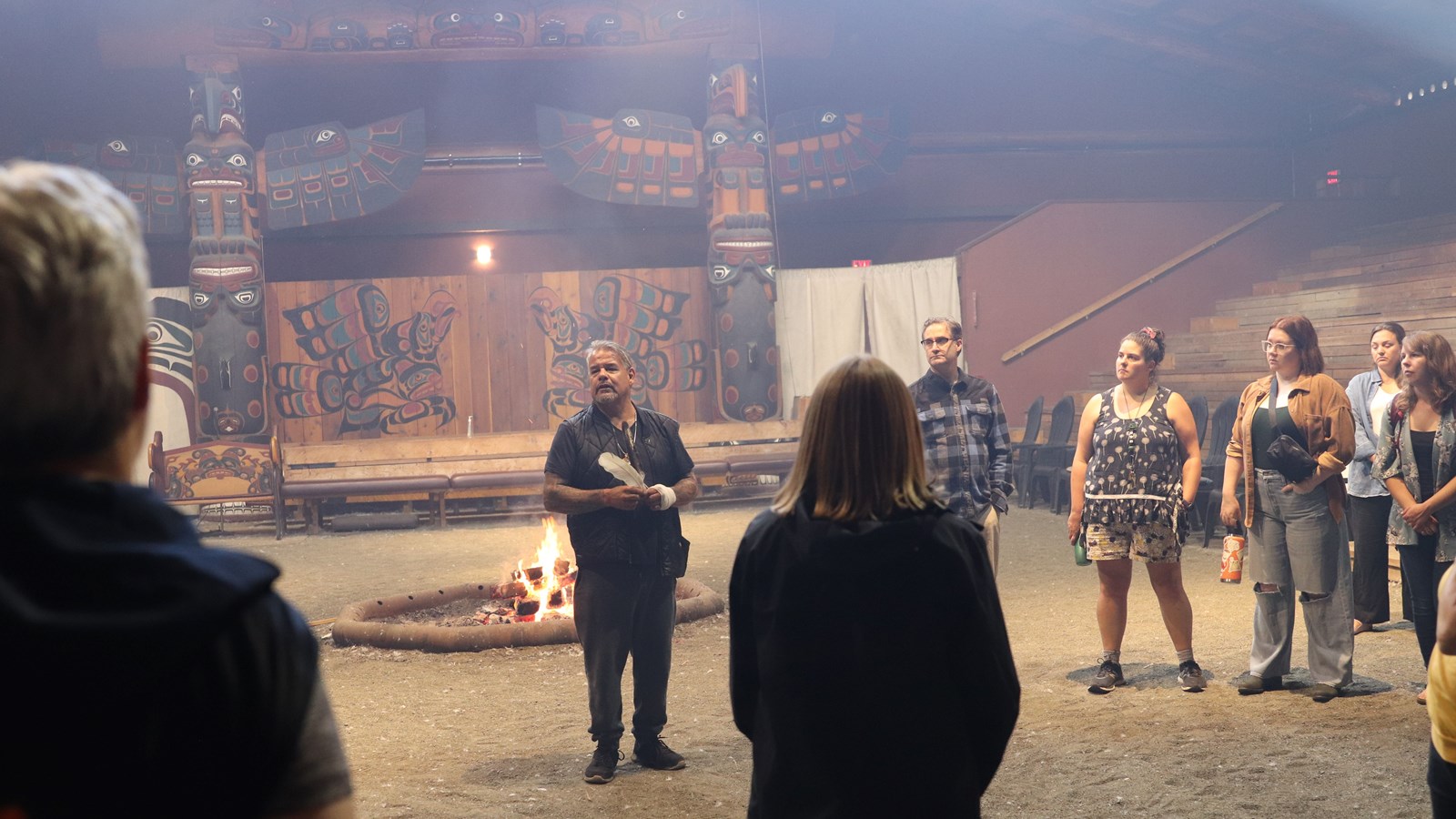
On August 31, while students were enjoying the last couple of days of summer break, teachers, principals and other support staff were already back at it, participating in professional development sessions to prepare for the school year ahead.
School staff from across the district engaged in a variety of professional learning activities throughout the day. We caught up with Robron Centre staff who spent the day focused on learning more about the Liǧʷiɫdax̌w people.
Honoured with a personal tour of Kʷənwa̓ci (pronounced Kwanwatsi) House of Thunder (Wei Wai Kum’s Bighouse) with Greg Henderson, Robron staff learned about the history of the bighouse and its artwork, bighouse protocols, potlaches, Liǧʷiɫdax̌w governance structures, and the difference between traditional and hereditary chiefs.
Bighouses were traditionally used for celebrations and as a home for several generations of the same family. There would be several bighouses in a village. As a home, each family unit would have a section of the bighouse partitioned off for themselves and their children. When it was time for a celebration, the privacy partitions were taken down and the bighouse was transformed into one large area to accommodate the potlatch dancing and feasting.
Kʷənwa̓ci was built in 1997 in the original style of the post and beam and plank construction and is made from cedar. The totem poles, posts, and beams in Kʷənwa̓ci were carved and painted by Bill Henderson, Greg Henderson, Junior Henderson and Patrick Hunt to represent the different family groups in the Wei Wai Kum First Nation. The dance screen and screen art at the entrance were designed and painted by Mark Henderson, and the house front was designed by Mark Henderson and painted by both Mark and Greg Henderson.
With potlatches having been outlawed for generations, the construction of Kʷənwa̓ci was a celebration for community and an opportunity to openly reclaim the potlatch and create a sacred shared space for local Indigenous peoples to gather and openly hold these important community and cultural events.
Mid-morning Andy Puglas Sr., who is a fish guardian manager for Mamalilikulla First Nation, shared the importance of salmon to the Kwakwaka’wakw territory and provided a lesson in traditional fish preparation and smoking techniques. Andy Puglas Sr. did the traditional fish BBQ, and his son Andrew Puglas treated the group to a catered traditional lunch of smoked salmon, chowder, Bannock, salads, and fresh fruit.
The afternoon featured a tour of the carving shed with Bill and Greg Henderson and an overview of the history of ƛ’əNiqwala, the Wei Wai Kum’s Tribal Journeys canoe, from Cory Cliffe and 2023 Skipper Rock Quocksister.
In the carving shed, renowned Kakwaka’wakw carver Bill Henderson shared about his process of “making wood talk” and fondly recalled stories about his father (legendary carver Sam Henderson) the culture of his people, and the cultural stories of the Kwakwaka’wakw that he has shared internationally through his works.
ƛ’əNiqwala, which was also carved by Bill Henderson from a single large cedar tree that fell close to 100 years ago, was paddled from Campbell River’s Discovery Passage to the Pacific Northwest and Muckleshoot for this year’s Tribal Journey.
Tribal Journeys is an annual intertribal canoe journey that resumed in 2023 after a three-year hiatus because of the COVID pandemic. It was started in 1993 to celebrate the dugout canoe, the traditional mode of transportation for coastal First Peoples.
During Tribal Journeys, canoe families paddle from their coastal communities, working their way towards the host nation stopping at other coastal communities along the way. Tribes share their stories, songs, and dances, strengthening their connection to each other, the land, and their cultural heritage.
Honouring Indigenous world views and perspectives is a priority of the district’s strategic plan and is important given that 21 percent of the district’s student population are Indigenous. Professional development opportunities like this allow district staff the opportunity to learn more about the contribution and culture of local Indigenous peoples so that we can continue to build greater cultural understanding and belonging within our schools.
Ǧilakasl̓a to Kerri Henderson for organizing this great day of learning and to Greg Henderson, Andy Puglas Sr., Andrew Puglas, Bill Henderson, Cory Cliffe, and Rock Quocksister for sharing their knowledge.










